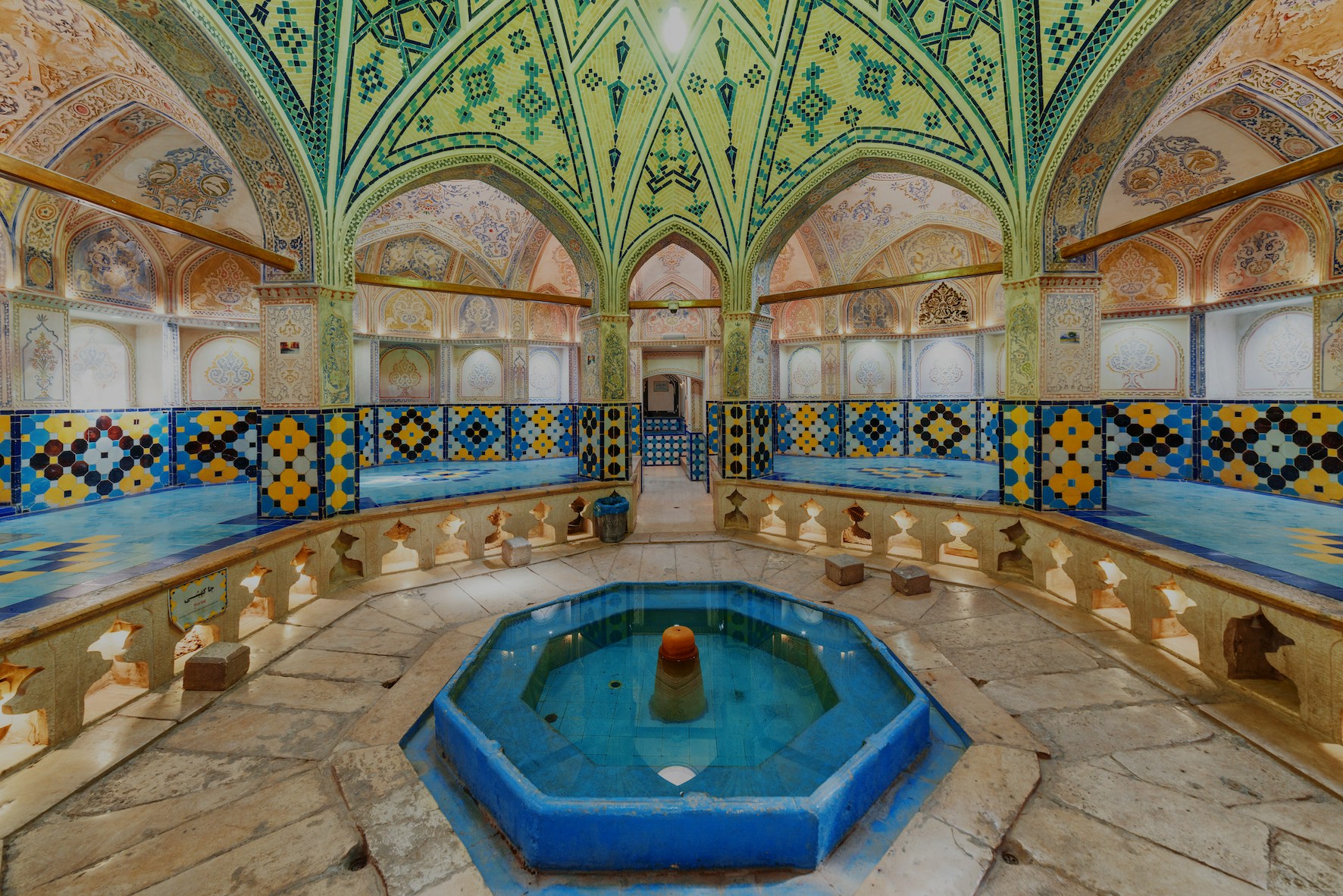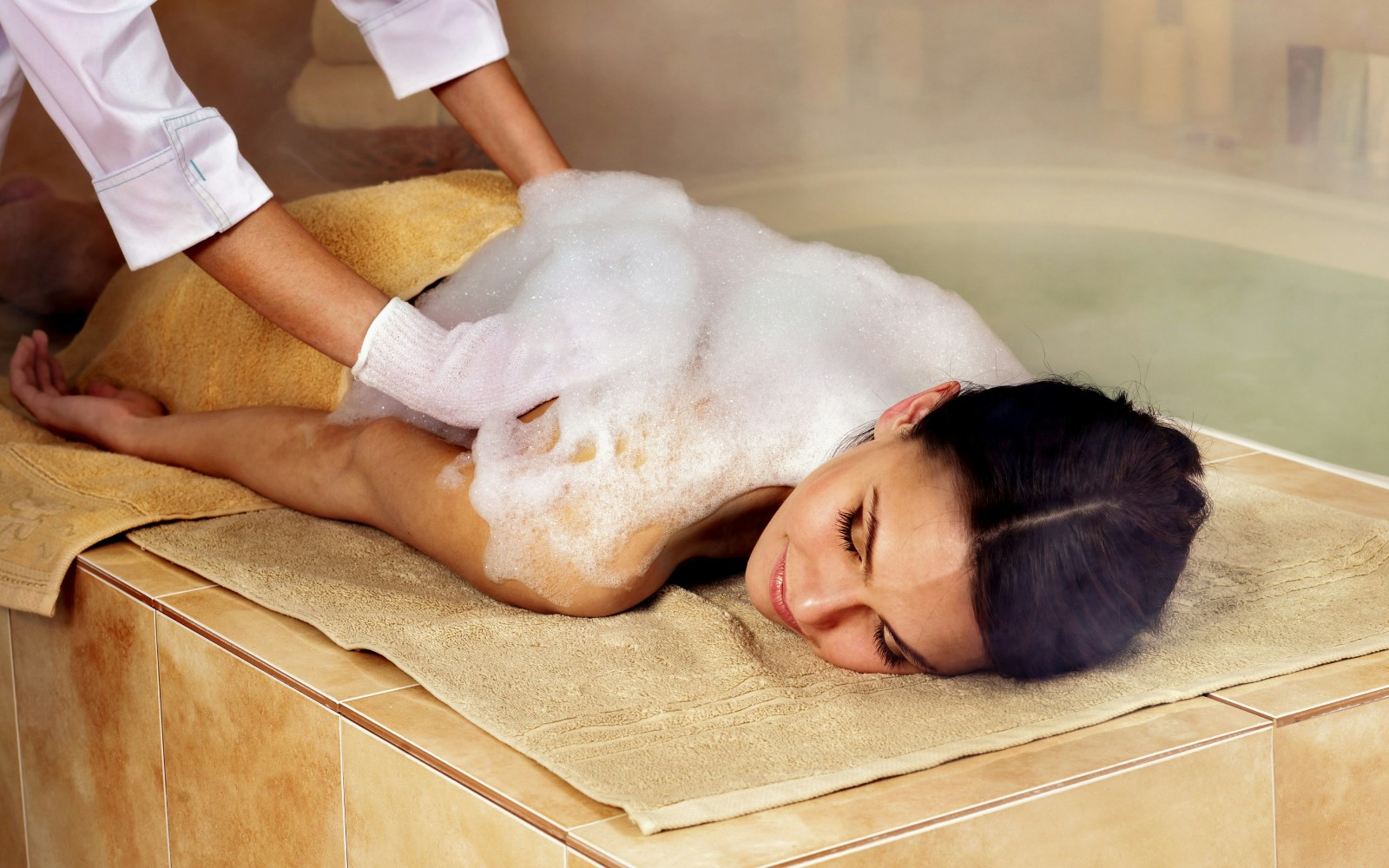- Basilica Cistern Tickets
- Topkapi Palace Tickets
- Dolmabahçe Palace Tickets
- Galata Tower Tickets
- Hagia Sophia Tickets
- Princes' Islands Tours
- Blue Mosque Tickets
- LEGOLAND Discovery Center Tickets
- Grand Bazaar
- Istanbul Aquarium
- Maiden's Tower
- Istanbul Airport transfers
- Pierre Loti Hill Tickets
- Camlica Tower Tickets
- Whirling Dervishes Show Tickets
Discover The Inner Workings of The Turkish Baths
Inside The Turkish Bath
.jpg?auto=format&q=90&crop=faces)



The Design of a Turkish Bath

- The Structure of a Turkish Bath: The design of a Turkish bath is unique, with a central dome that allows natural light to enter the bathhouse. The bath is usually divided into different sections, including a hot room, a cold room, a dressing room, and a massage room. The central dome is the heart of the bathhouse, and it provides a calm and serene atmosphere.
- The Layout of a Turkish Bath: The layout of a Turkish bath is designed to promote relaxation and comfort. The bathhouse usually has a circular or square layout with the hot room located in the center. The other rooms are arranged around the hot room, with the cold room usually located next to it. The dressing room is located at the entrance, while the massage room is located at the back of the bathhouse.
- The Rooms of a Turkish Bath: The Turkish bath has several rooms, each with a specific purpose. The dressing room is where visitors undress and leave their belongings. The hot room, also known as the steam room, is where visitors sweat out toxins and impurities from their bodies. The cold room, also known as the cooling room, is where visitors cool down after spending time in the hot room. The massage room is where visitors receive a relaxing massage.
Turkish Baths: The Intersection of Health and Culture

The Health Benefits of Turkish Baths
Turkish baths were initially designed to cleanse the body and soul, as bathing was seen as a spiritual practice. The purpose of Turkish baths evolved, with some used for socializing and others used for healing.
- Detoxification: Heat and steam from the bath help open pores and release toxins from the body. This can lead to a stronger immune system and healthier skin.
- Skin health: The heat and steam remove dead skin cells, promoting new cell growth for softer, smoother, and more radiant skin.
- Stress relief: The warm and soothing environment of a Turkish bath can help reduce stress and promote relaxation, especially when combined with other spa treatments.
- Improved circulation: Heat and steam dilate blood vessels, leading to better blood flow, reduced inflammation, and healing.
- Mental health benefits: The rituals and relaxing atmosphere of a Turkish bath can reduce stress and anxiety, and the tea ritual can promote a sense of calm and well-being.

The Cultural Significance of Turkish Baths
The Turkish bath has a rich cultural significance in Turkish society, beyond its health benefits. Here are some of the ways Turkish baths have played an important role in Turkish culture:
- Communal Bathing: A Turkish bath is a place where people of all backgrounds can come together and enjoy the benefits of communal bathing.
- Social and Political Meetings: In the past, Turkish baths were important meeting places for discussing important matters and making business deals.
- Continuing Tradition: Turkish baths remain an important part of Turkish culture today and are enjoyed by locals and visitors alike.
- Literary and Artistic Depictions: Turkish bathhouses have featured heavily in literature and art, with their unique beauty and ambiance captured beautifully.
- Literary Works and Paintings: Several literary works, including novels, poems, and essays, have been written about the Turkish bath, and several scenes have been painted, highlighting its cultural importance.
How to Buy Turkish Baths Tickets?
Frequently Asked Questions about the inside of Turkish Baths
A Turkish Bath, also known as a Hammam, is a traditional method of cleansing and relaxation that originated in the Ottoman Empire. It is a bathing ritual that involves steam, heat, and massage, and is often seen as a social activity in Turkish culture.
Turkish Baths have a rich history that dates back to ancient Roman and Greek times. They were introduced to the Ottoman Empire in the 14th century and became an important part of Turkish culture, with many bathhouses built throughout the country. Today, Turkish Baths continue to be an important cultural and social institution in Turkey.
Visiting a Turkish Bath can provide numerous health benefits, including detoxification, improved circulation, stress relief, and softer, smoother skin. The heat and steam help to open up pores and release toxins from the body, while also promoting new cell growth and better blood flow.
Most Turkish Baths provide towels and slippers for their visitors. It is recommended to wear a swimsuit or shorts and a t-shirt for comfort.
It depends on the specific Turkish Bath. Traditional bathhouses have separate hours or sections for men and women, while the newer, more modern ones are co-ed.
During a Turkish Bath session, visitors typically move through a series of rooms or chambers that vary in temperature and humidity levels. They may receive a massage or scrub from an attendant, and are encouraged to relax and unwind in the peaceful atmosphere.
The length of a Turkish Bath session can vary, but typically lasts between 30 minutes to 1 hour however, you can stay for as long as want within the operating hours.
Although tipping is not mandatory in Turkish Baths, you are expected by the staff to leave a tip for the attendants who provide massages or other treatments.
Visitors should be respectful of others and follow the rules and customs of the specific Turkish Bath. It is important to be clean and courteous, and to avoid being too loud or disruptive.
It depends on the specific medical condition. Visitors should consult with their doctor before visiting a Turkish Bath if they have any concerns about their health.



